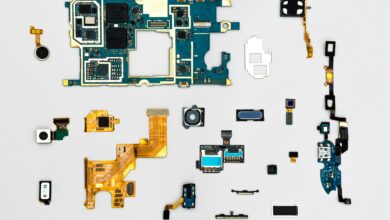How Flying Cars Will Change the Way We Travel in the Future
The concept of flying cars has long been a staple of science fiction, captivating imaginations with visions of futuristic cities where vehicles soar through the skies. While flying cars may have seemed like a distant dream in the past, recent advancements in technology are bringing this vision closer to reality. In this article, we’ll explore how flying cars have the potential to revolutionize the way we travel in the future.
The Emergence of Flying Cars
Technological Advances
Recent breakthroughs in areas such as electric propulsion, autonomous navigation, and lightweight materials have paved the way for the development of flying cars. Electric motors offer efficient and environmentally friendly propulsion, while advances in autonomous technology enable vehicles to navigate safely through the air without human intervention. Additionally, lightweight materials such as carbon fiber contribute to the design of agile and energy-efficient flying vehicles.
Urban Air Mobility
The concept of Urban Air Mobility (UAM) envisions a future where flying cars provide on-demand transportation services within urban areas. UAM aims to alleviate traffic congestion, reduce commute times, and improve overall transportation efficiency. By taking advantage of the three-dimensional airspace, flying cars can bypass traditional road networks and offer direct, point-to-point travel routes.
Impacts on Transportation
Faster Commutes
Flying cars have the potential to drastically reduce travel times, especially in densely populated urban areas where traffic congestion is a major issue. By flying above ground-level obstacles, commuters can avoid traffic jams and reach their destinations in a fraction of the time it would take by conventional means.
Enhanced Accessibility
Flying cars could improve accessibility to remote or isolated areas that are difficult to reach by traditional means of transportation. This could have significant implications for emergency response, medical evacuation, and disaster relief efforts, allowing for faster and more efficient access to affected areas.
Urban Planning and Infrastructure
The introduction of flying cars will necessitate changes in urban planning and infrastructure to accommodate aerial transportation networks. Vertiports, or designated takeoff and landing zones for flying vehicles, will need to be integrated into existing urban landscapes. Additionally, regulations and air traffic management systems will need to be developed to ensure the safe and efficient operation of flying cars within urban environments.
Challenges and Considerations
Safety and Regulation
Safety is a paramount concern when it comes to flying cars, as the integration of aerial vehicles into densely populated urban areas introduces new risks and challenges. Regulatory frameworks will need to be established to govern the operation of flying cars, including certification standards, pilot licensing requirements, and air traffic control protocols.
Infrastructure Development
Building the necessary infrastructure to support a network of flying cars will require significant investment and coordination among government agencies, private companies, and urban planners. This includes the construction of vertiports, the implementation of air traffic management systems, and the development of charging infrastructure for electric-powered vehicles.
Environmental Impact
While flying cars offer the potential for reduced congestion and faster travel times, their widespread adoption could also have environmental implications. Increased air traffic could lead to higher levels of noise pollution and air pollution, as well as greater energy consumption. Efforts to mitigate these impacts will be essential to ensure that the benefits of flying cars are balanced with environmental sustainability.


